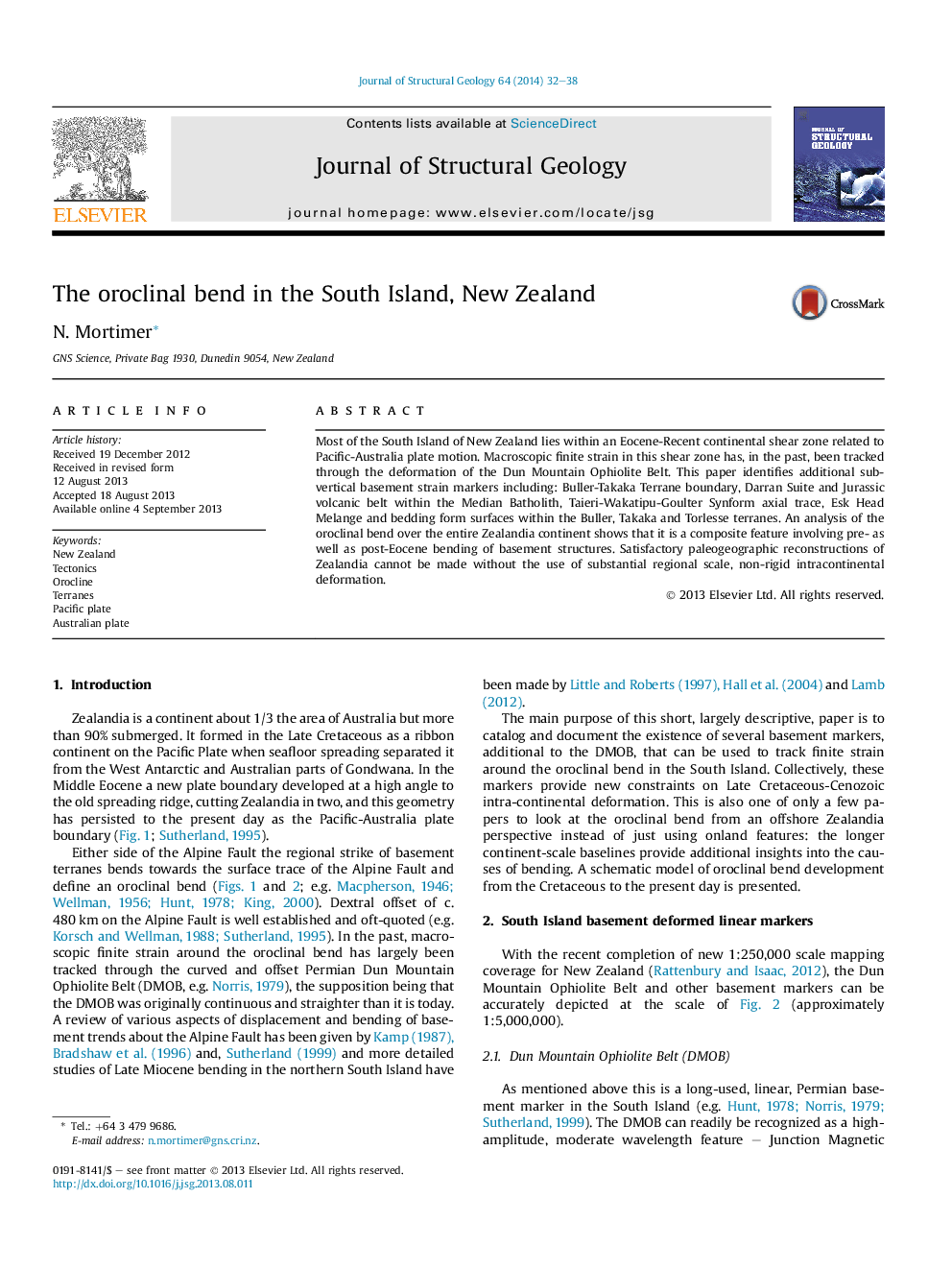| Article ID | Journal | Published Year | Pages | File Type |
|---|---|---|---|---|
| 4733155 | Journal of Structural Geology | 2014 | 7 Pages |
•A compilation of macroscopically-deformed basement structures is made.•The structures define an intra-continental oroclinal bend.•There has been pre-Eocene and post-Eocene development of the bend.•Zealandia paleogeographic reconstructions require substantial non-rigid deformation.
Most of the South Island of New Zealand lies within an Eocene-Recent continental shear zone related to Pacific-Australia plate motion. Macroscopic finite strain in this shear zone has, in the past, been tracked through the deformation of the Dun Mountain Ophiolite Belt. This paper identifies additional sub-vertical basement strain markers including: Buller-Takaka Terrane boundary, Darran Suite and Jurassic volcanic belt within the Median Batholith, Taieri-Wakatipu-Goulter Synform axial trace, Esk Head Melange and bedding form surfaces within the Buller, Takaka and Torlesse terranes. An analysis of the oroclinal bend over the entire Zealandia continent shows that it is a composite feature involving pre- as well as post-Eocene bending of basement structures. Satisfactory paleogeographic reconstructions of Zealandia cannot be made without the use of substantial regional scale, non-rigid intracontinental deformation.
